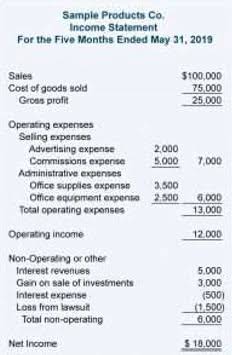
FIFO leaves the newer, more expensive inventory in a rising-price environment, on the balance sheet. As a result, FIFO can increase net income because inventory that might be several years old–which was acquired for a lower cost–is used to value COGS. However, the higher net income means the company would have a higher tax liability. When sales are recorded using the LIFO method, the most recent items of inventory are used to value COGS and are sold first. In other words, the older inventory, which was cheaper, would be sold later.
An Example of LIFO Calculation

FreshBooks accounting software offers a helpful way to manage business inventory, track new orders, and organize expenses. Generate spreadsheets, automate calculations, and pay vendors all from one comprehensive system. Try FreshBooks free to start streamlining your LIFO inventory management and grow your small business. The LIFO method assumes that Brad is selling off his most recent inventory first. Since customers expect new novels to be circulated onto Brad’s store shelves regularly, then it is likely that Brad has been doing exactly that.
- However, this results in higher tax liabilities and potentially higher future write-offs if that inventory becomes obsolete.
- One of the main reasons for this ‘ban’ is the concern that LIFO can result in the understatement of income taxes in periods of inflation.
- The $1.25 loaves would be allocated to ending inventory (on the balance sheet).
- Below is a break down of subject weightings in the FMVA® financial analyst program.
- If you’re considering LIFO, be sure to have a conversation with your CPA.
Understanding the inventory formula

Your remaining inventory may be undervalued, especially if you have a lot of older stock. Each method https://www.facebook.com/BooksTimeInc/ has its strengths and may be more suitable depending on your business type and inventory management needs. Choose one method and stick with it to maintain reliable records over time. Your ending inventory value appears on both your net income statement and balance sheet.
How does the LIFO method affect taxable profits?

Let’s break down the process involved calculating lifo in arriving at the above value of ending inventory. Based on the calculation above, Lynda’s ending inventory works out to be $2,300 at the end of the six days. Last In First Out (LIFO) is the assumption that the most recent inventory received by a business is issued first to its customers.
- As stated, one of the benefits of the LIFO reserve is to allow investors and analysts to compare companies that use different accounting methods, equally.
- This LIFO calculator uses the last-in-first-out method of inventory valuation to determine ending inventory value and cost of goods sold.
- The 450 books are now no longer considered inventory, they are considered cost of goods sold.
- Using inventory management software, businesses can calculate inventory using the LIFO method, or average cost.
- If your goal is to show larger profits and more assets on your financial statements, you want to reduce your costs of goods sold and increase your inventory value.
- The LIFO method is used in the COGS (Cost of Goods Sold) calculation when the costs of producing a product or acquiring inventory has been increasing.

These documents are reviewed by executives, lenders, and investors, making accuracy crucial for maintaining trust and credibility. Regular ending inventory calculations provide an accurate assessment https://www.bookstime.com/ of your financial status. This is often required for audited financial statements and helps you make informed business decisions. Lenders often review ending inventory as a key balance sheet metric when considering business loan applications.
- Conversely, not knowing how to use inventory to its advantage, can prevent a company from operating efficiently.
- A company generates the same amount of income and profits regardless of whether they use FIFO or LIFO, but the different valuation methods lead to different numbers on the books.
- Should the company sell the most recent perishable good it receives, the oldest inventory items will likely go bad.
- It’s only permitted in the United States and assumes that the most recent items placed into your inventory are the first items sold.
- Even if a company produces only one product, that product will have different cost values depending upon when they produce it.
- This expense reduces their taxable income, helping businesses lower their tax bill.



